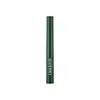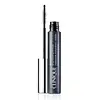What's inside
What's inside
 Key Ingredients
Key Ingredients

 Benefits
Benefits

 Concerns
Concerns

 Ingredients Side-by-side
Ingredients Side-by-side

Water
Skin ConditioningAcrylates Copolymer
Beeswax
Emulsion StabilisingPvp
Emulsion StabilisingButylene Glycol
HumectantCI 77499
Cosmetic ColorantCopernicia Cerifera Wax
Glyceryl Behenate
EmollientPalmitic Acid
EmollientCI 77491
Cosmetic ColorantTalc
AbrasiveStearic Acid
CleansingTriethanolamine
BufferingOryza Sativa Extract
AbsorbentSesamum Indicum Seed Extract
Skin ConditioningGlycine Max Seed Extract
Skin ConditioningRubus Fruticosus Fruit Extract
AstringentAcetylated Sucrose Distearate
EmollientGlyceryl Stearate
EmollientMagnesium Aluminum Silicate
AbsorbentPolysorbate 60
EmulsifyingSorbitan Sesquioleate
EmulsifyingNylon-66
PEG-100 Stearate
Ethylhexylglycerin
Skin ConditioningTriethoxycaprylylsilane
Silica
AbrasiveAlcohol Denat.
AntimicrobialXanthan Gum
EmulsifyingDisodium EDTA
Phenoxyethanol
PreservativeSodium Dehydroacetate
PreservativeCI 77007
Cosmetic ColorantCI 77891
Cosmetic ColorantWater, Acrylates Copolymer, Beeswax, Pvp, Butylene Glycol, CI 77499, Copernicia Cerifera Wax, Glyceryl Behenate, Palmitic Acid, CI 77491, Talc, Stearic Acid, Triethanolamine, Oryza Sativa Extract, Sesamum Indicum Seed Extract, Glycine Max Seed Extract, Rubus Fruticosus Fruit Extract, Acetylated Sucrose Distearate, Glyceryl Stearate, Magnesium Aluminum Silicate, Polysorbate 60, Sorbitan Sesquioleate, Nylon-66, PEG-100 Stearate, Ethylhexylglycerin, Triethoxycaprylylsilane, Silica, Alcohol Denat., Xanthan Gum, Disodium EDTA, Phenoxyethanol, Sodium Dehydroacetate, CI 77007, CI 77891
Water
Skin ConditioningAcrylates Copolymer
Kaolin
AbrasiveCopernicia Cerifera Wax
PEG-15 Glyceryl Stearate
EmulsifyingSilica
AbrasiveButylene Glycol
HumectantAlcohol
AntimicrobialHydrogenated Rapeseed Alcohol
EmollientBentonite
AbsorbentPolyvinyl Alcohol
Sucrose Distearate
EmollientStearic Acid
CleansingSimmondsia Chinensis Seed Oil
EmollientDimethicone
EmollientSimethicone
EmollientVp/Va Copolymer
Nylon-66
Tocopherol
AntioxidantAminomethyl Propanediol
BufferingAminomethyl Propanol
BufferingXanthan Gum
EmulsifyingChlorphenesin
AntimicrobialSodium Dehydroacetate
PreservativePhenoxyethanol
PreservativeCI 77491
Cosmetic ColorantCI 77492
Cosmetic ColorantCI 77499
Cosmetic ColorantCI 77891
Cosmetic ColorantCI 75470
Cosmetic ColorantCI 19140
Cosmetic ColorantCI 42090
Cosmetic ColorantCI 77007
Cosmetic ColorantCI 77163
Cosmetic ColorantCI 77288
Cosmetic ColorantCI 77742
Cosmetic ColorantCI 77289
Cosmetic ColorantWater, Acrylates Copolymer, Kaolin, Copernicia Cerifera Wax, PEG-15 Glyceryl Stearate, Silica, Butylene Glycol, Alcohol, Hydrogenated Rapeseed Alcohol, Bentonite, Polyvinyl Alcohol, Sucrose Distearate, Stearic Acid, Simmondsia Chinensis Seed Oil, Dimethicone, Simethicone, Vp/Va Copolymer, Nylon-66, Tocopherol, Aminomethyl Propanediol, Aminomethyl Propanol, Xanthan Gum, Chlorphenesin, Sodium Dehydroacetate, Phenoxyethanol, CI 77491, CI 77492, CI 77499, CI 77891, CI 75470, CI 19140, CI 42090, CI 77007, CI 77163, CI 77288, CI 77742, CI 77289
 Reviews
Reviews

Ingredients Explained
These ingredients are found in both products.
Ingredients higher up in an ingredient list are typically present in a larger amount.
Acrylates Copolymer is used as a film-forming agent and texture enhancer.
After applied, Acrylates Copolymer forms a thin film cover that helps skin feel more soft. It can help sunscreens become more water-resistant.
It is also used to make a product more thick.
Learn more about Acrylates CopolymerButylene Glycol (or BG) is used within cosmetic products for a few different reasons:
Overall, Butylene Glycol is a safe and well-rounded ingredient that works well with other ingredients.
Though this ingredient works well with most skin types, some people with sensitive skin may experience a reaction such as allergic rashes, closed comedones, or itchiness.
Learn more about Butylene GlycolThis pigment is called Ultramarine blue lazurite. It gives a saturated blue color, but can be used to create other colors as well.
According to the manufacturer, it is usually made from kaolin, sodium sulfate, sodium carbonate, sulfur, and charcoal.
Ci 77491 is also hydrated iron III oxide. It's sole purpose is to give a red/pink hue to products.
Iron III oxides are classified as inorganic chemicals for coloring.
Synthetically created Ci 77491 is considered safer than those naturally found. This is because the synthetically created version may contain less impurities. Iron oxides are generally non-toxic and non-allergenic.
Learn more about CI 77491Ci 77499 is also hydrated iron III oxide. It is created from mixing red and black iron oxides. This helps give shades of darkness to a product.
Iron III oxides are classified as inorganic chemicals for coloring.
Ci 77891 is a white pigment from Titanium dioxide. It is naturally found in minerals such as rutile and ilmenite.
It's main function is to add a white color to cosmetics. It can also be mixed with other colors to create different shades.
Ci 77891 is commonly found in sunscreens due to its ability to block UV rays.
Learn more about CI 77891Copernicia Cerifera Wax comes from a palm tree native to Brazil; another name for this ingredient is Carnauba Wax.
This ingredient is used to thicken texture and also leaves behind a film when applied.
Fun fact: This wax has the highest melting point of all natural waxes and low solubility.
Learn more about Copernicia Cerifera WaxWe don't have a description for Nylon-66 yet.
Phenoxyethanol is a preservative that has germicide, antimicrobial, and aromatic properties. Studies show that phenoxyethanol can prevent microbial growth. By itself, it has a scent that is similar to that of a rose.
It's often used in formulations along with Caprylyl Glycol to preserve the shelf life of products.
Silica, also known as silicon dioxide, is a naturally occurring mineral. It is used as a fine, spherical, and porous powder in cosmetics.
Though it has exfoliant properties, the function of silica varies depending on the product.
The unique structure of silica enhances the spreadability and adds smoothness, making it a great texture enhancer.
It is also used as an active carrier, emulsifier, and mattifier due to its ability to absorb excess oil.
In some products, tiny microneedles called spicules are made from silica or hydrolyzed sponge. When you rub them in, they lightly polish away dead skin layers and enhance the penetration of active ingredients.
Learn more about SilicaThis ingredient is a preservative with antimicrobial properties. It is the sodium salt of dehydroacetic acid.
It is especially effective at preventing bacterial and fungal growth in low concentrations.
Stearic Acid is a fatty acid. It is an emollient, emulsifier, and texture enhancer.
As an emollient, stearic acid helps soften skin. It aids the skin's protective barrier by preventing water loss. It also provides a gentle cleansing effect without stripping away natural oils.
Stearic acid may also be used to enhance the texture of products. It can add volume and stabilize ingredients such as water and oil. This can help water and oil ingredients from separating.
Sources of stearic acid include animal or vegetable fats/oils such as coconut or shea. It can be naturally found in butter, cocoa butter, shea butter, vegetable fats, and animal tallow.
This ingredient may not be Malassezia folliculitis, or fungal-acne safe.
Learn more about Stearic AcidWater. It's the most common cosmetic ingredient of all. You'll usually see it at the top of ingredient lists, meaning that it makes up the largest part of the product.
So why is it so popular? Water most often acts as a solvent - this means that it helps dissolve other ingredients into the formulation.
You'll also recognize water as that liquid we all need to stay alive. If you see this, drink a glass of water. Stay hydrated!
Learn more about WaterXanthan gum is used as a stabilizer and thickener within cosmetic products. It helps give products a sticky, thick feeling - preventing them from being too runny.
On the technical side of things, xanthan gum is a polysaccharide - a combination consisting of multiple sugar molecules bonded together.
Xanthan gum is a pretty common and great ingredient. It is a natural, non-toxic, non-irritating ingredient that is also commonly used in food products.
Learn more about Xanthan Gum